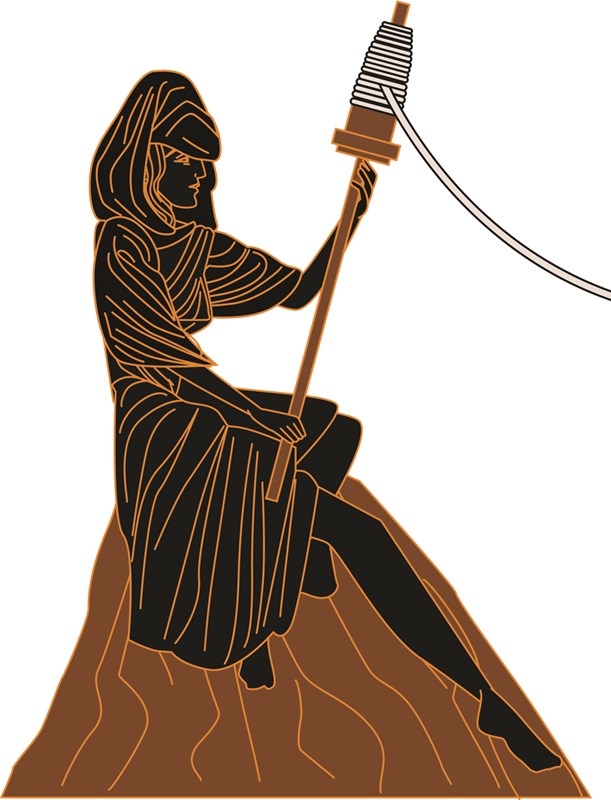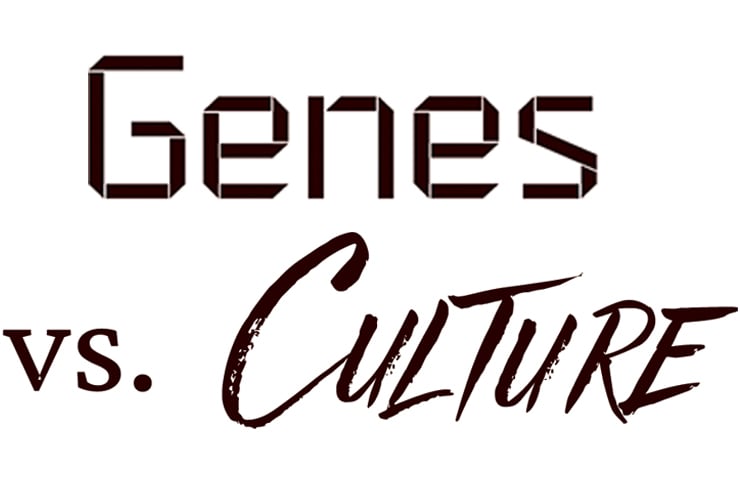In the current American definition of democracy, all adult citizens should have the right to vote and otherwise participate in politics. Earlier exclusions of women or nonwhites have been disallowed. Similar rules are supposed to apply to preferred positions in civil society. In a meritocracy, it has been believed until recently, individual capability should count when filling faculty positions and enrollment slots in universities.
Unfortunately for the left, the privileging of merit has not brought sufficient numbers of women and nonwhites into high places. So now identity politics has made gender and race into qualifications for success. Now, all demographic groups are supposed to succeed in proportion to their shares of the population, an ideal I call “equal group outcomes.” And to realize equal group outcomes, affirmative action must favor the hiring of women and minorities in visible positions, at whatever cost in fairness to white men.
To make equal group outcomes seem reasonable, we must totally reject any idea that women or nonwhites are in any way different from men or whites, except in appearance. To the establishment, sameness is a religion. In order not to contradict the tenets of this religion, we must be made to believe that all social groups have exactly the same talents and potentials. Women have certain physical features required to bear children, but otherwise right-thinking people must convince themselves that women can do all the same things as men, including climbing mountains and leading troops in combat. And the nonwhite races must be perceived to be just as able as whites to do mentally demanding things, such as winning Nobel Prizes.
Government, academia, and the nonprofit world are strongly committed to this vision. The Biden administration has already shown by its appointments and policies that only black and women’s lives matter. Most white men will now be kept in the back rooms, where they’ll still do most of the work, but women and minorities will receive most of the titles, attention, and praise.
The elite world must come to appear as it already does in The New York Times, in which the achievements and grievances of women and blacks get vastly more attention, while white men are seldom to be mentioned, other than in criticisms or obituaries. A new and diverse ruling class is replacing them. You can see it also in television ads, in which minorities appear in numbers far greater than required even by the principle of equal group outcomes. (A friend in advertising tells me this is because corporations demand that their ads display more “diversity.”) All this pandering is justified as recompense for past generations of injustice, when women could only be housewives and blacks could only be janitors cleaning up after white people.
Conservatives face a juggernaut determined to transform society. To oppose this force, it will not be enough to complain about excessive costs or big government, as the conservative-minded used to do. Instead, they must necessarily discredit the value of sameness. It defies common sense, after all, to believe that, on average, women and minorities should naturally rival white men as leaders and achievers when such has never happened before in any known society. And lest this inequality be attributed entirely to social injustice, conservatives must have the courage to argue that things intrinsic to women and minorities make sameness simply impossible.

Charles Murray is the best-known of several conservatives who have made this case. In several works going back to 1994, he has summarized research suggesting that women’s interests—which are oriented mainly to other people and the family—are too personal and private for most of them to seek the impersonal forms of success that most men do. Above all, blacks and Hispanics, on average, test too low in measured intelligence to compete with whites and Asians for most cognitively demanding jobs. Equal group outcomes and sameness are simply contrary to real human diversity.
It is indeed true that black IQ scores average about a standard deviation below the norm, but there is intense dispute about possible causes and cures. Are intelligence differences dictated largely by genetics, as Murray and others argue, or by the adverse social conditions in which most black children grow up? Research suggests that the differences reflect both genetics and conditions, although the relative importance of these factors is still disputed. It’s also unclear how much differences in measured IQ reflect actual differences in reasoning ability. What is clear is that there is little society can do to equalize group differences in IQ.
The undeniable IQ gap, however, has not slowed the sameness juggernaut very much. Due to systemic preferences, large numbers of blacks are still being admitted to top colleges and later given prestigious jobs in academe and the nonprofit world, even though few of these candidates would achieve these positions on a merit basis. White men and their sons can now hope for fair treatment only in the purely private sector, beyond the reach of federal money and authority.
The greatest damage is to honesty. Preferences demand that our leaders violate equal opportunity without admitting it. The clear message is that to advance group equality outweighs every other value, including personal integrity.

To resist sameness, conservatives would do well to redirect attention to the bottom of society rather than the top. The really embarrassing fact about black America today is not low intelligence but the near-total breakdown of order among poor blacks in our major cities. Due to the collapse of the black family in recent decades, 70 percent of black children are now born outside marriage, nearly three times the rate in the 1960s. Hispanics show similar trends according to the data from the National Center for Health Statistics.
Lacking fathers and enough supervision, black and brown children today typically grow up without the self-discipline needed to get through school and become reliable workers and parents. Their children, in turn, tend to repeat the same patterns. So nonwhite poverty is entrenched.
 Crime rates differ hugely by race. In his 2021 book, Facing Reality: Two Truths About Race in America, Murray finds that the rate blacks are arrested for violent crime is nine-to-eleven times that of whites, and the Hispanic rate is two-to-three times that of whites. Fear of crime is the main reason why racial integration has failed. Most whites reject racism but, fearing disorder, still shun living in nonwhite areas or sending their children to nonwhite schools.
Crime rates differ hugely by race. In his 2021 book, Facing Reality: Two Truths About Race in America, Murray finds that the rate blacks are arrested for violent crime is nine-to-eleven times that of whites, and the Hispanic rate is two-to-three times that of whites. Fear of crime is the main reason why racial integration has failed. Most whites reject racism but, fearing disorder, still shun living in nonwhite areas or sending their children to nonwhite schools.
Among poor blacks and Hispanics, the biggest deficit compared to whites is in self-command, not in intelligence. But neither left nor right says much about this, for ideological reasons. In identity politics, the left has to attribute all black problems entirely to white racism. “Victims” must bear no blame for any social problem, even the most personal, such as drug addiction or unwed childbearing. Conservatives, for their part, fear that any policy response will inevitably fail, thus expanding government and its spending to no purpose.

Answers require shifting focus away from personal capacity to culture—the attitudes that shape how society functions. The decline of order has occurred mostly in the last 50 years and has little to do with deteriorating intelligence. Indeed, in that period, testable IQ scores (if not performatory intelligence) have risen. This secular rise in measured IQ scores is called the Flynn effect, and is seen in the scores of all groups. Whether it means a rise in actual, real-world analytical ability is unclear.
What is vanishing is society’s willingness and ability to demand good behavior from its members and to enforce those standards. In the 1950s and before, it was simply expected that Americans would behave decently to others, obey the law, get through school, work steadily afterwards, and get married before having children. Violating those standards was deterred by active disapproval, and compliance was nearly as high among minorities as it was among whites.
Conservatives yearn to recreate this modest but orderly society as it existed up to the 1960s. Murray looks back to the simple, rural society in Newton, Iowa, where he grew up. In that world, inequality in both talent and occupation was candidly admitted yet accepted. Society was unified despite inequality because even the less intelligent had a valued place—a function they could perform and that others appreciated. This dutiful culture was the common coin of American life.
The great question in anti-poverty policy is why blacks and Hispanics largely abandoned such norms in the 1960s and 1970s—just when conditions for them vastly improved due to civil rights legislation. Liberals typically say that the economy no longer provided well-paid jobs for the less educated after factories moved to Asia, so unskilled men could no longer be reliable husbands and fathers. Conservatives retort that society and government became too permissive, allowing far higher levels of single parenthood, crime, and welfarism than before.
On the hard evidence, neither answer persuades. Jobs sufficient to escape poverty (if combined with public benefits) have remained widely available, as runaway immigration shows, and the lenient crime and welfare policies of the Great Society era have largely been tightened up (although there have been recent reversions). Yet among blacks and Hispanics, crime is still vastly higher than for other groups, while most of their children are still fatherless and struggling in school. Against these differences, conventional social programs that merely scatter benefits have proven almost powerless.

Why are nonwhites different? As even Murray admits in his 2020 book, Human Diversity: The Biology of Gender, Race, and Class, research has not yet tied IQ differences among the races to genetic differences, nor does intelligence dictate ways of life. The far more important difference is cultural.
Most whites, descended from Europeans, brought with them to America an unusual psychology that allowed them to pursue personal goals, such as making money and getting ahead, but also constrained them to observe general strictures about right and wrong. But apparently because of their non-Western origins, all racial minorities—Hispanics, Asians, and Native Americans, as well as blacks—on average, lack the same inner-driven temperament. They chiefly react to outside pressures rather than pursue personal goals, and what is moral to them reflects mainly what other people expect of them rather than what conforms to general principles of right and wong.
This matters because, despite our political rhetoric, the essence of historical America does not actually lie in the principle of freedom. Our society is not liberated in any simple sense. Rather, the American project shifted the forces of order from largely outside to largely inside the self. Conscience, rather than external authority, became the principle enforcer of good behavior through much of American history. This is the principal reason why, with few exceptions, only Western countries are able to combine personal freedom with a civic culture that supports strong government.
In the non-Western world that shift has never occurred. There, social order is enforced far more by external authority, including one’s family, tribe, informal social mores, as well as official government coercion. The non-West is diverse in many ways, including in religious belief, but virtually all non-Western institutions defer strongly to external authority. One seldom finds outside the West the Western willingness to obey legitimate government while also holding it accountable. Non-Western governments often deny freedom, but they are actually far weaker and more corrupt than the freer but more civic West. Ever since Hegel, Western scholars have noted this difference.

The chief reason for the black and Hispanic breakdown is that after 1960, America no longer mustered the external authority that most people from these non-Western groups needed to live orderly lives. The ancestors of most American blacks came from Africa, which was and is the world’s least individualistic society. Southern whites realized that Africans could be made to work and obey only through external control, so they enforced strict compliance with behavioral rules. Created under slavery, that regime lasted for most blacks until the mid-20th century.
The system was then abolished by the civil rights reforms of the 1960s, which outlawed discriminatory controls aimed only at blacks. More importantly, the old habits of order lost much of their grip on black society, as blacks migrated from the largely-rural South to northern cities. In the North, they received far fairer treatment, but they also had to reckon for the first time with mainstream, individualistic society, in which good behavior was largely based on self-command rather than external enforcement.
Only about a third of American blacks took on this temperament of individual responsibility, largely through their parents enrolling them in regular attendance at churches and schools. This one-third estimate is based on the fact that about a third of black children are born to married parents, and these families have the best chance to escape poverty and join the middle class. Only these families could really be at home in this country, which took the Western mentality of individual responsibility for granted. Still today, the majority of blacks continue to live lives of survival, getting along day by day as most people do in the non-West, but not progressing out of poverty.
After the civil rights reforms of the 1960s, most blacks were liberated from both external and internal control without another system to adequately replace the old order, resulting in chaos. It’s worth emphasizing that the collapse came largely after the civil rights era, rather than before. Traditionally, academics have blamed blacks’ problems entirely on white oppression, but if that were true, black social problems should have been worse earlier.
In reality, the Jim Crow era preceding civil rights legislation was one of economic and social progress for most blacks, who saw steady gains in education and earnings. What triggered the breakdown, ironically, was the end of oppression. Jim Crow was certainly terrible and unjust, but it did provide structure to blacks that most of them could not provide for themselves. Its end, along with the social permissiveness of Northern cities, left blacks at sea.
The story of Hispanics is quite similar, even though they were never enslaved and came to this country voluntarily, for the most part. For them as for blacks, their recent challenge in America has not been oppression but freedom. In Mexico and Latin America, social order is based largely on the pressures of a traditional society, often with authoritarian forms of government. Single parenthood is uncommon. But after Hispanics emigrate to America, they must cope with a far freer society. Their family breakup rate increases sharply, and crime and school problems become more serious. The many Hispanics who emigrate illegally fare worse. While the first generation of Hispanic migrants typically works hard, their children often trend downward into the underclass. Again, lack of self-command, not lack of intelligence, is their chief difficulty.
Asians seem to contradict this theory of self-command as an original feature of Western cultures, but that is less true than it appears. As the “model minority,” Asians on average avoid the severe social problems of blacks and Hispanics, probably because most Asian-Americans have chosen to emigrate legally and thus are more highly selected for toleration of the Western form of cultural freedom. Asians also have stronger family structures. But although they do famously well in school—better on average than whites—they do less well in careers after school, often because they fear to assert themselves in ways needed to succeed in the West. Academics often find them frustrating to teach because they often expect to be told what to think rather than to think for themselves. They excel at solving problems first posed by others, but leadership in the free, entrepreneurial West is mostly about deciding what the questions are. That requires a greater focus on personal goals and beliefs than most Asians have.
To progress in America, all the minorities, each in a different way, must become more committed to inner goals and values than to outer pressures and temptations. Gradually, as individualists address challenges in their own lives, improvement follows. And from this flows the special dynamism of a free society. Americans expect every individual, as St. Paul said, to “work out your salvation in fear and trembling” (Philippians 2:12). Those who do not, or cannot, will remain outsiders within traditional American society.

For poor blacks especially, restoration of order is the first necessity. The truth of this is already shown by America’s past successes in reducing crime and welfare fraud. For a period starting in the 1980s, law enforcement became tougher, and in the 1990s, the cash welfare system was conditioned to require adult recipients to work in return for aid. These policies restored some of the outer authority that blacks relied on to maintain intact families and neighborhoods in the decades before civil rights.
The danger now is that Left and Right will revert to their normal belief that the solution to poverty is some version of freedom. The left wants government to do more for the poor without expecting any good behavior from them. Crime has recently rebounded due to anti-racism protests, which have driven police to back off law enforcement in black areas. Defying the success of welfare reform, Congress has repealed work requirements by guaranteeing poor mothers an income without having to either marry or work. These steps are mistaken and unpopular, even among blacks and others in poverty; they may well be reversed.
Conservatives would prefer simply to cut back welfare and other social programs, trusting private society to instill civility. But that assumes a functioning society still exists, when in fact it must be recreated. The real answers to disorder are programs that promote good behavior so that low-income groups once again earn the trust of other people, even strangers they do not know.
 Our most successful anti-poverty programs have exactly this character. Rather than offer their clients only benefits and choices, they tell them clearly what they must do to get ahead in life: get through school, obey the law, and avoid having children until you are married and employed. The most notable successes have been in high-performing charter schools. The best of them, such as the Knowledge Is Power Program and the Success Academy in New York City, emphasize high standards but also strictly enforce order. On average, charter schools do not have much of an impact, but the trendsetters show the model that works best, as revealed by David Whitman in Sweating the Small Stuff: Inner-City Schools and the New Paternalism (2008) and Robert Pondiscio in How the Other Half Learns: Equality, Excellence, and the Battle Over School Choice (2019).
Our most successful anti-poverty programs have exactly this character. Rather than offer their clients only benefits and choices, they tell them clearly what they must do to get ahead in life: get through school, obey the law, and avoid having children until you are married and employed. The most notable successes have been in high-performing charter schools. The best of them, such as the Knowledge Is Power Program and the Success Academy in New York City, emphasize high standards but also strictly enforce order. On average, charter schools do not have much of an impact, but the trendsetters show the model that works best, as revealed by David Whitman in Sweating the Small Stuff: Inner-City Schools and the New Paternalism (2008) and Robert Pondiscio in How the Other Half Learns: Equality, Excellence, and the Battle Over School Choice (2019).
Our best youth training programs are quite similar. Aimed at dropouts and modeled on military training, they teach concrete skills but also good behavior and compliance with legitimate authority. Good examples are the Job Corps, run by the Labor Department, and the Youth Challenge Program, run by the National Guard. Programs with similar directives show larger positive effects on education and employment than those that offer only benefits, as demonstrated by Hugh B. Price in Strugglers Into Strivers: What the Military Can Teach Us About How Young People Learn and Grow (2014).

Such programs, like crackdowns on crime and welfare, may seem only to restore the external authority that typically keeps order in the non-Western world. But what they really do is re-parent children and thus change their culture. They provide the firm and clear direction about good behavior that children require to flourish in later life. Ideally, they should receive it at a formative age, so that the norms can be internalized. This is the kind of transfer from outer to inner authority that creates an individualist culture and explains its unique power.
Because the parents in poor families are typically single and disorganized, however, the transfer of values from parent to child falters. Parents fail to live by their own values, so they lack the personal authority to teach those values to their offspring. Their children then give up on their family and become similarly distrustful of the later authority figures—teachers, employers, and law enforcement. None of these nonparent adults can get through to a child who has been failed by his family, even if he gets through school. These children are instead mostly headed for dysfunctional lives of single parenthood, poverty, and crime. In this situation, only external institutions can keep control—child welfare agencies to take away single mothers’ children and law enforcement agencies to incarcerate many of the fathers. Yet these tragic steps only ratify family failure.
Demanding schools and training programs, however, are run by functioning adults who are more able than most poor parents to command children’s attention and respect and thus build in them the capacity to govern themselves. Only if teachers and students form this psychic bond can learning in a more academic sense succeed. If pursued with conviction over a generation, directive measures like these might restore a more harmonious society. Black poverty would decline because many more black families would be two-parent and functional. With more blacks getting through school, more would succeed at various levels of the workforce. Enough blacks would hold a variety of jobs on their own merits to decompress the whole racial problem.
Of course, the IQ gap is still real, and blacks would not as often obtain the most cerebral and prestigious occupations. But a system focused on disciplined education and personal responsibility would allow blacks to take pride in real accomplishments, just like any other group, rather than be boosted artificially by systemic racial preferences. This kind of cultural change could achieve true racial integration in America, whereas racial preferences imposed by government fiat achieve only the appearance of it. Equal group outcomes and sameness could be abandoned as the destructive fantasies they are. The traditional American norm—equal opportunity—would suffice to unify and to challenge a now-multiracial society.
Some conservatives might fear that if they promoted such a restoration, they may suffer politically. After all, the left, having opposed welfare reform, later took advantage of it. The very success of the 1990s reform was one reason why the ensuing Obama administration was able to expand costly federal health programs. The argument was that because many poor families left welfare for work and thus escaped poverty, they could no longer get health care from welfare and thus needed new programs. But the kind of restoration I’m suggesting would solve the problem of a black population with intractable social problems, a condition upon which the left depends because it stokes racial grievances. This kind of restoration would deprive the progressive left of the cudgel they have used to indict American society ever since the civil rights era.

To answer identity politics with the IQ debate, as some on the right do, concedes far too much. It centers entirely on the physical attributes of people. To be sure, race, gender, and IQ do define who people are in much of the world. For most of humanity, demography or caste does determine destiny. Most people probably are content with this. To seek a more individualized tence takes too much energy. The idea that all of humanity seeks freedom is a fiction. That is why nearly all non-Western societies have been essentially passive. In most of the non-West, only elites take charge. And if those societies change much, it has largely been in response to Western pressure or example.
Anti-racists contend that racism and sexism still impose identities on out-groups in America. Far more plausibly, the relative passivity of these groups reflects the attitudes they brought with them from the old country, compounded in the black case by slavery and Jim Crow. The America Alexis de Tocqueville encountered in the 1830s was quite different, largely because it was almost entirely European. Most people then were assertive but also civil, able to cooperate even with strangers for common ends. But go to America’s ghettoes, barrios, or Chinatowns today, and you will instead find the passivity and incivility typical of the non-West. Strangers are distrusted. Some children there may be doing well in school, but for most inhabitants, life is only about daily survival.
 For most Americans, identity comes not from any external feature but from internal goals and values. People are inner-driven, not outer-driven. Interestingly, those from minority backgrounds do become more individualist with time, but it takes several generations. None of today’s minorities has more than begun that transition. Anti-racist leaders are commendably individualist themselves, but they typify their followers as powerless, and that is in fact how many minorities feel. A reactive and deferential style still marks them as outsiders.
For most Americans, identity comes not from any external feature but from internal goals and values. People are inner-driven, not outer-driven. Interestingly, those from minority backgrounds do become more individualist with time, but it takes several generations. None of today’s minorities has more than begun that transition. Anti-racist leaders are commendably individualist themselves, but they typify their followers as powerless, and that is in fact how many minorities feel. A reactive and deferential style still marks them as outsiders.
Social scientists ignore this vital cultural difference. Their analyses of incomes or inequality, usually drawn from economics, typically assume a universal human nature in which everyone seeks to maximize his or her utilities. The analysts simply ignore the gulf in self-determination that separates people of Western and non-Western temperaments. The former accept freedom and pursue its possibilities, while the latter prefer a more stable world with clearer expectations. We assume the globalized economy has somehow spread an individualist mentality everywhere. In fact, such a mentality faces stiff resistance in most of the world. Economists have only begun to reckon with this great fact.
In the IQ wars, both Charles Murray and his critics also ignore culture. Both sides assume sameness about lifestyle, just as the establishment would like to believe about IQ. But in culture as in capability, sameness is a myth. To integrate into America, the individuals in nonwhite groups must above all accept individual responsibility. To do that is to take on the burdens of freedom. That is how one earns what Murray calls a “valued place,” something government cannot bestow. This is what liberals never understand.
America does not require that its citizens be white or that they have some minimum income or IQ, but it does assume an individualistic way of life. One cannot simply exist and wait for the world to direct

Leave a Reply